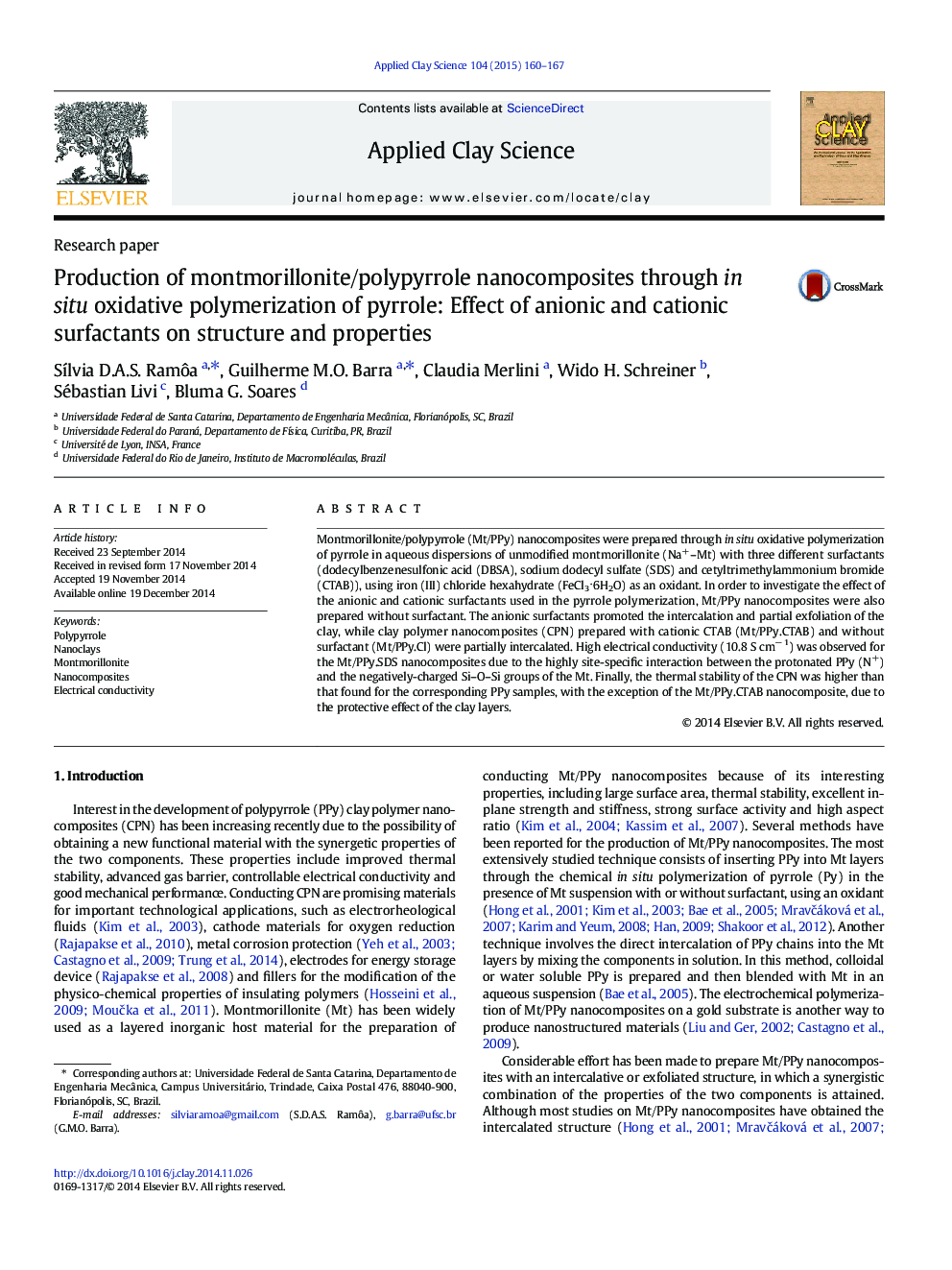| Article ID | Journal | Published Year | Pages | File Type |
|---|---|---|---|---|
| 1694625 | Applied Clay Science | 2015 | 8 Pages |
•The effect of surfactants in the Mt/PPy nanocomposites preparation was investigated.•The anionic surfactants promoted the intercalation and partial exfoliation of Mt.•The nanocomposites produced with CTAB and without surfactant were intercalated.
Montmorillonite/polypyrrole (Mt/PPy) nanocomposites were prepared through in situ oxidative polymerization of pyrrole in aqueous dispersions of unmodified montmorillonite (Na+–Mt) with three different surfactants (dodecylbenzenesulfonic acid (DBSA), sodium dodecyl sulfate (SDS) and cetyltrimethylammonium bromide (CTAB)), using iron (III) chloride hexahydrate (FeCl3⋅6H2O) as an oxidant. In order to investigate the effect of the anionic and cationic surfactants used in the pyrrole polymerization, Mt/PPy nanocomposites were also prepared without surfactant. The anionic surfactants promoted the intercalation and partial exfoliation of the clay, while clay polymer nanocomposites (CPN) prepared with cationic CTAB (Mt/PPy.CTAB) and without surfactant (Mt/PPy.Cl) were partially intercalated. High electrical conductivity (10.8 S cm− 1) was observed for the Mt/PPy.SDS nanocomposites due to the highly site-specific interaction between the protonated PPy (N+) and the negatively-charged Si–O–Si groups of the Mt. Finally, the thermal stability of the CPN was higher than that found for the corresponding PPy samples, with the exception of the Mt/PPy.CTAB nanocomposite, due to the protective effect of the clay layers.
